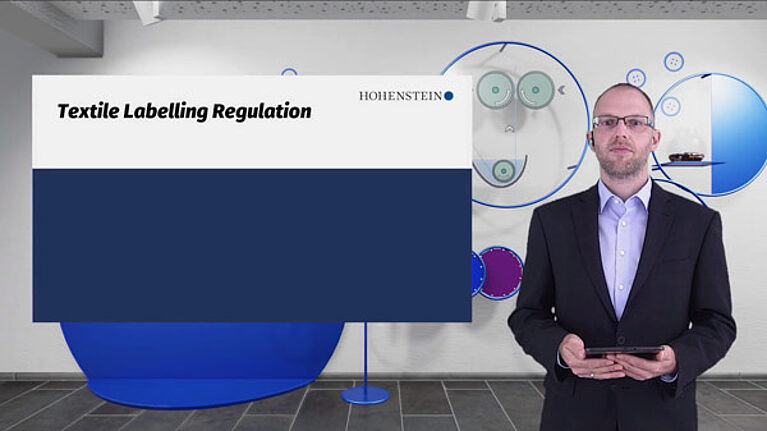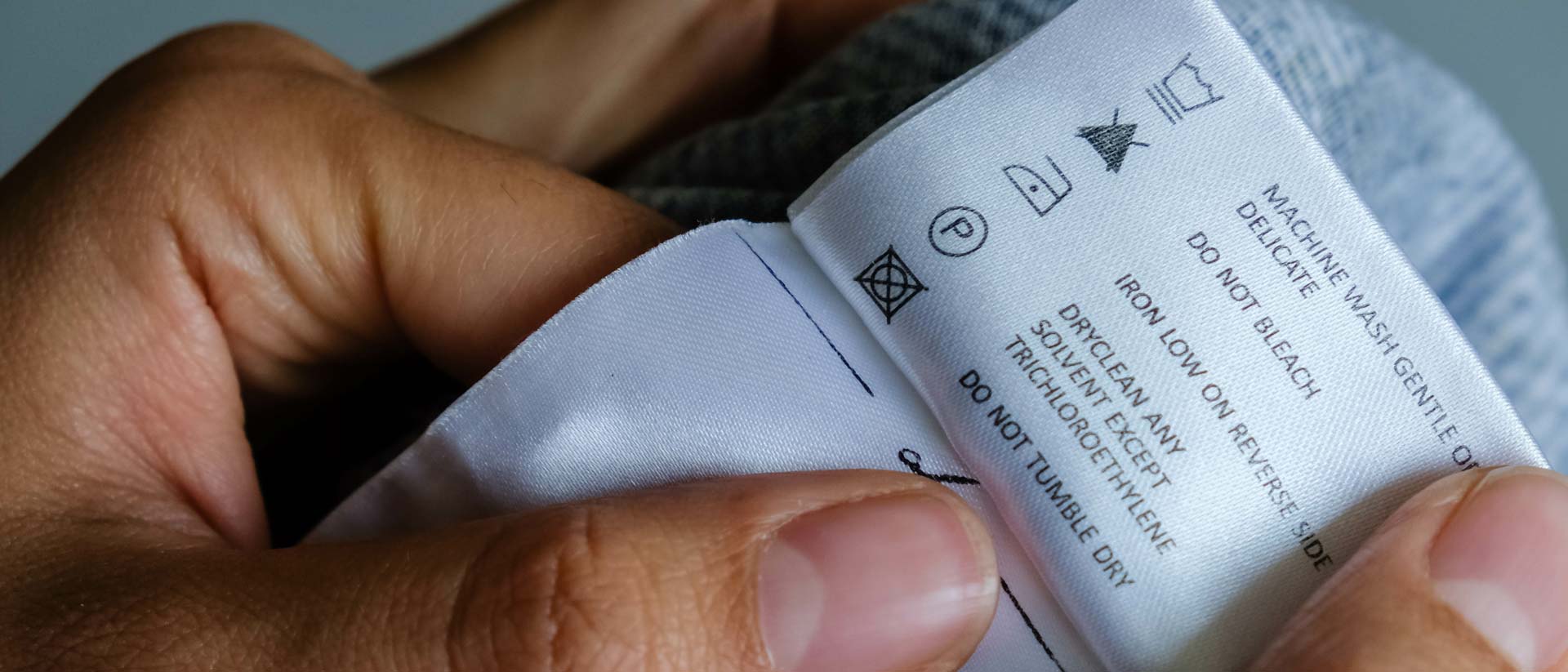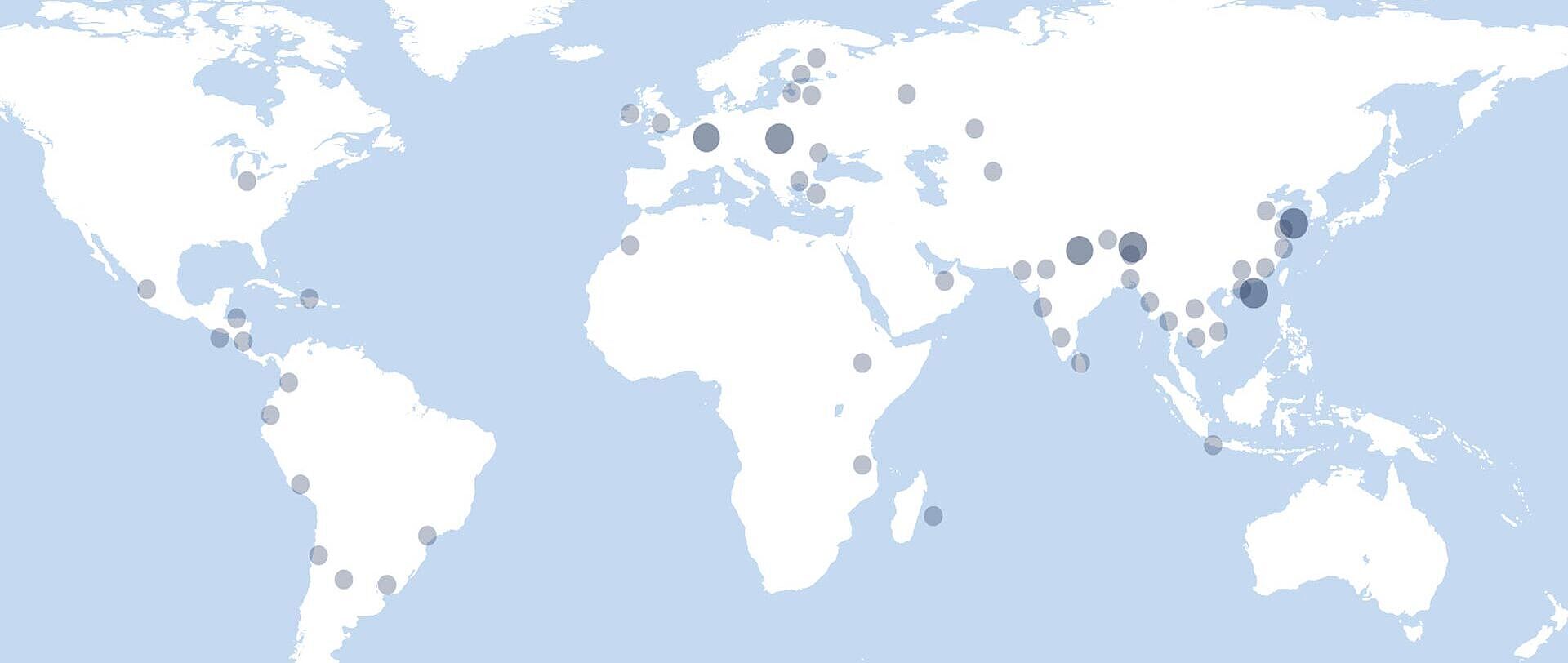We help you navigate global textile labeling laws.
- Does my product have to be labeled or not?
- Which labels are important for my product?
- How do I comply with different labeling laws in the U.S., EU, UK, Canada, China, etc.?
- Which terms are permissible for labeling and which are not?
- Who is responsible for labeling?
- Which product groups are subject to special labeling regulations?
- Are there special requirements for textile labeling in online retail?
- How do we comply with size labeling requirements around the world?
- What is required for labeling leather and fur?
U.S. Labeling Laws
Required for sale in U.S.:
- Conspicuous, accessible and readable label information in English (with additional languages allowed)
- Permanent label with specific placement (e.g. neck/waist for garments)
- Fiber content and composition
(including specific wording on labels, e.g. “rayon made from bamboo" vs "bamboo") - Country of origin marking (e.g. "Made in the United States")
- Manufacturer or dealer identity or registered identification number (RN)
- Care instructions
- CPSIA choking hazard warning
- Wool or fur disclosures
- CPSIA tracking labels for children's products
- Stuffed products (e.g. plush toys, bedding, etc.) - label must include “Do Not Remove” statement, filling materials (by weight), company name, Uniform Registry Number (URN)
- Truthful "green" claims
Consumer Products in California
- Proposition 65 Warning Label on products with restricted chemicals and heavy metals
Consumer Products in California, New York, on Amazon, etc.
- Bag suffocation warning label
- Labeling and documentation - upholstered furniture with flame retardant chemicals
Garment Sizes - not required, but covered by ASTM standards
- ASTM D4910/D4910M - Children and infants
- ASTM D6192 - Girls (sizes 2-20)
- ASTM D6240/D6240M - Men (age 35+)
Canada Labeling Laws
Required for sale in Canada:
- Visible, in English and French, without false or misleading claims
- Some products require permanent labels able to withstand ten cleanings
- Fiber, down, feather and/or leather content
- Generic name of each textile fibre comprising five per cent or more by mass of the total fibre mass of the article
- Percentage by mass of the total fibre mass of the article
- Identification
- Product ID number (model number or SKU)
- Net quantity or weight
- Generic name/function/identity
- Country of origin
- CA number - or - Importer or manufacturer’s name, address, contact
- Identity of the person by or for whom the consumer textile article was manufactured or made
- Hazard warnings on children's products and toys
- Choking, plastic bags
- Flame retardant sleepwear
EU Labeling Laws

Textiles represent the only product group for which there is a separate labelling regulation. EU Regulation 1007/2011 on material labeling of textiles places specific requirements on economic operators and, in the event of violations, often leads to disputes under competition law and measures by the market surveillance authorities. Other labeling regulations must be observed beyond material identification:
- Manufacturer and identification marking
- Care labelling
- CE marking (Relevant for clothing textiles with protective function (PPE) or electrical components, textile toys and medical devices)
- Biocide labelling
- Warning notices for toys
UK Labelling (UKCA)
For Hohenstein customers who have the EU CE label/certification, we can also arrange UKCA certification through a partner UK conformity assessment body.
Please contact us for more information.

